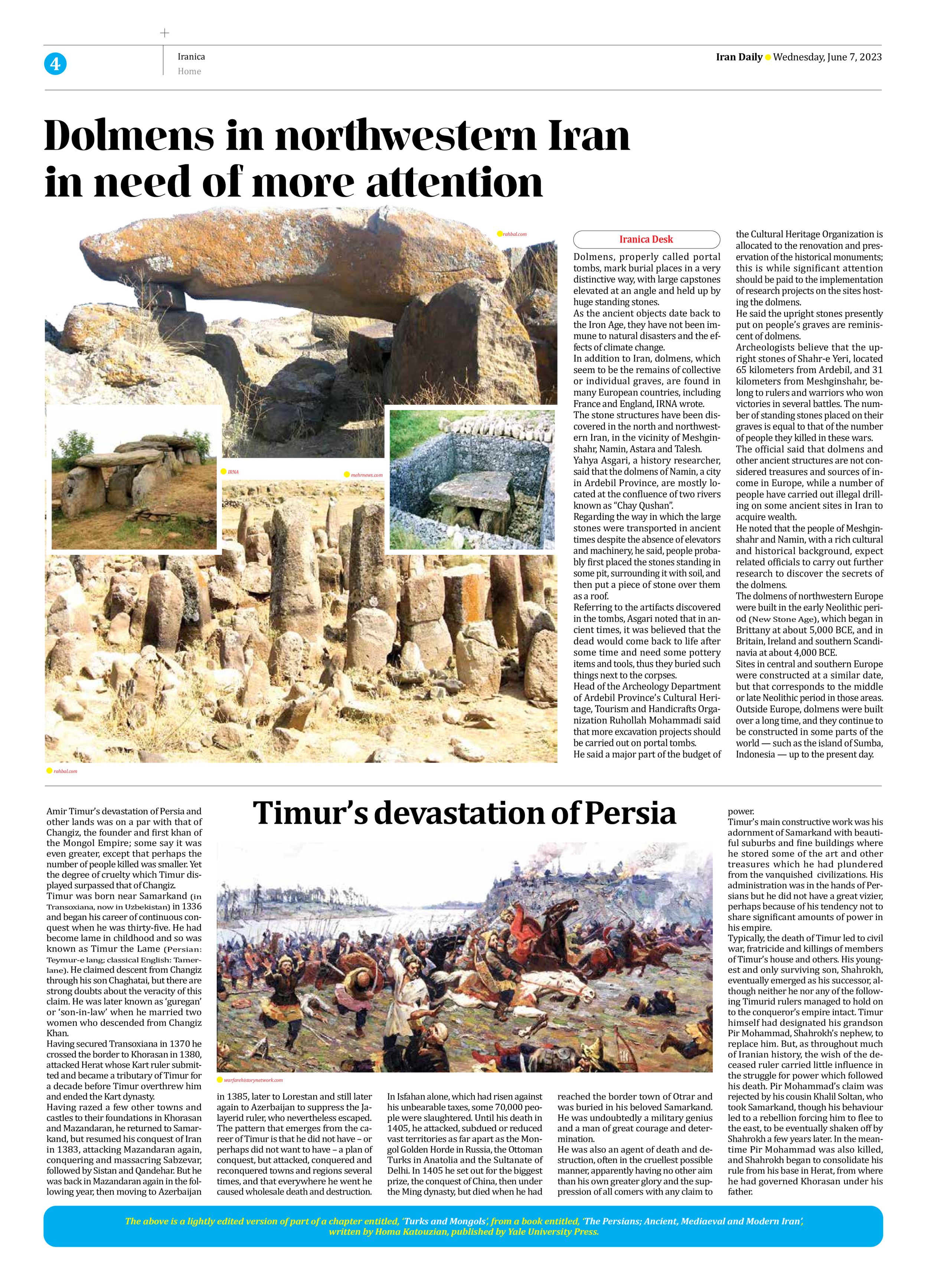
Dolmens in northwestern Iran in need of more attention
Dolmens, properly called portal tombs, mark burial places in a very distinctive way, with large capstones elevated at an angle and held up by huge standing stones.
As the ancient objects date back to the Iron Age, they have not been immune to natural disasters and the effects of climate change.
In addition to Iran, dolmens, which seem to be the remains of collective or individual graves, are found in many European countries, including France and England, IRNA wrote.
The stone structures have been discovered in the north and northwestern Iran, in the vicinity of Meshginshahr, Namin, Astara and Talesh.
Yahya Asgari, a history researcher, said that the dolmens of Namin, a city in Ardebil Province, are mostly located at the confluence of two rivers known as “Chay Qushan”.
Regarding the way in which the large stones were transported in ancient times despite the absence of elevators and machinery, he said, people probably first placed the stones standing in some pit, surrounding it with soil, and then put a piece of stone over them as a roof.
Referring to the artifacts discovered in the tombs, Asgari noted that in ancient times, it was believed that the dead would come back to life after some time and need some pottery items and tools, thus they buried such things next to the corpses.
Head of the Archeology Department of Ardebil Province’s Cultural Heritage, Tourism and Handicrafts Organization Ruhollah Mohammadi said that more excavation projects should be carried out on portal tombs.
He said a major part of the budget of the Cultural Heritage Organization is allocated to the renovation and preservation of the historical monuments; this is while significant attention should be paid to the implementation of research projects on the sites hosting the dolmens.
He said the upright stones presently put on people’s graves are reminiscent of dolmens.
Archeologists believe that the upright stones of Shahr-e Yeri, located 65 kilometers from Ardebil, and 31 kilometers from Meshginshahr, belong to rulers and warriors who won victories in several battles. The number of standing stones placed on their graves is equal to that of the number of people they killed in these wars.
The official said that dolmens and other ancient structures are not considered treasures and sources of income in Europe, while a number of people have carried out illegal drilling on some ancient sites in Iran to acquire wealth.
He noted that the people of Meshginshahr and Namin, with a rich cultural and historical background, expect related officials to carry out further research to discover the secrets of the dolmens.
The dolmens of northwestern Europe were built in the early Neolithic period (New Stone Age), which began in Brittany at about 5,000 BCE, and in Britain, Ireland and southern Scandinavia at about 4,000 BCE.
Sites in central and southern Europe were constructed at a similar date, but that corresponds to the middle or late Neolithic period in those areas. Outside Europe, dolmens were built over a long time, and they continue to be constructed in some parts of the world — such as the island of Sumba, Indonesia — up to the present day.







